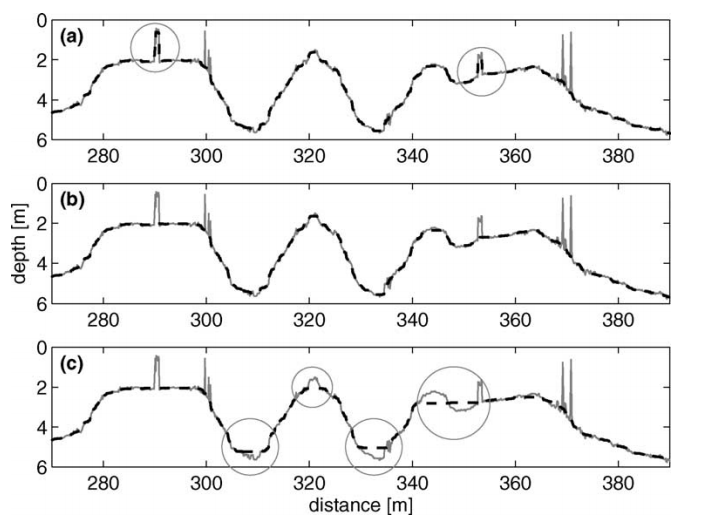Filtering the signature of submerged large woody debris from bathymetry data
ABSTRACT: Modeling water velocities and depth for riverine aquatic habitat analysis requires fine-scale surveys of river bathymetry. The presence of submerged large woody debris (LWD) distorts the results of acoustic bathymetry surveys and subsequent modeling if the LWD data is not separated from the background river bathymetry. Submerged LWD typically appears in digital acoustic data for a low-gradient sand-bed river as impulse spikes of a few data points with a substantially shallower depth than the surrounding data. This paper examines the performance of linear and nonlinear filtering algorithms for removing impulse spikes from a digital bathymetry signal. A synthesized data set is used for control tests that quantify the error associated with each method. The more successful nonlinear filtering techniques (median and erosion filters) are used to filter single-beam echosounder data, from the Sulphur River in northeastern Texas, USA. Median filtering proved to be the best technique for removing LWD impulse spikes while leaving the background bathymetry relatively unchanged. Efficient automation of spike removal from a data set requires a method for selecting the filter characteristics without recourse to engineering judgment or prior experience. A method of a priori selecting the minimum filter order based upon the physical scales of the LWD and the statistics of the data separation in the survey is proposed based on scaling analysis, and validated with the study results.
EXTRACT: Figure 14.

Fig. 14. Comparison of three median filter orders for Sulphur River bathymetry: (a) N=6; (b) N=11; (c) N=33.

